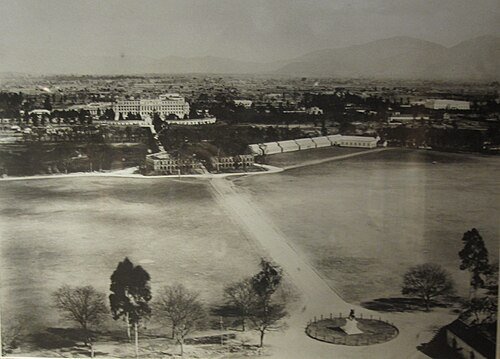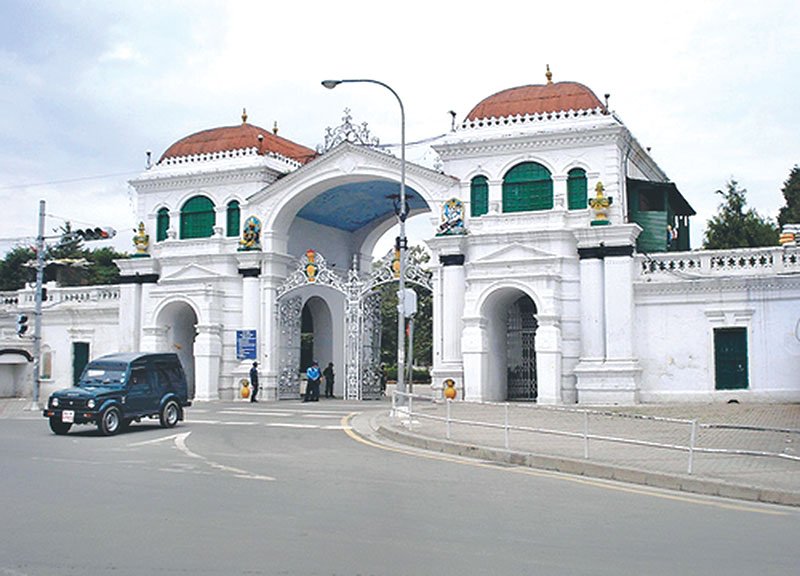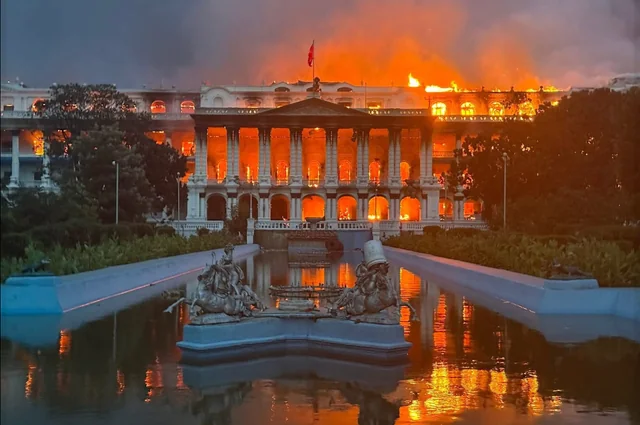
Nepal is a country rich in history, culture, and architectural marvels, and Singha Durbar stands as one of its most iconic symbols. Located in the heart of Kathmandu, Singha Durbar, meaning “Lion Palace,” is not just a physical structure; it is a testament to the nation’s political evolution, architectural innovation, and resilience. From its grand construction during the Rana era to its present-day role as the center of Nepalese governance, Singha Durbar has been at the heart of Nepalese history for over a century.
In this comprehensive guide, we will explore the construction, architecture, restorations, major historical events, and cultural significance of Singha Durbar, providing readers with a thorough understanding of its legacy.
1. Origins of Singha Durbar
The story of Singha Durbar begins in the early 20th century. Built in 1908 AD by Chandra Shumsher Jang Bahadur Rana, one of the most influential prime ministers of Nepal’s Rana dynasty, the palace was originally designed as a luxurious private residence. The Ranas were known for their ambition, opulence, and love for European-style architecture, and Singha Durbar was a reflection of these values.

Construction workforce: Thousands of skilled artisans, masons, and laborers from across Nepal contributed to its construction.
Materials used: Marble, crystal chandeliers, ornate woodwork, and European-style columns were imported from abroad.
Cost: Approximately 5 million Nepalese Rupees, which was an enormous investment at the time.
Singha Durbar was more than a residence; it was a political statement meant to showcase the power and wealth of the Rana family.
2. Architectural Grandeur
The palace’s architecture is a blend of European neoclassical design and traditional Nepalese elements, making it unique among South Asian palaces. Some of the architectural highlights include:
Maha Durbar Hall: The central hall used for major ceremonies and gatherings.
Neoclassical columns and balustrades: Imported from Europe to showcase sophistication.
Elaborate courtyards and gardens: A mix of European landscaping and Nepalese aesthetics.
Secret corridors and chambers: Built for security and private royal meetings.
The palace originally housed over 200 rooms, including private chambers, administrative offices, libraries, and ballrooms. Decorative motifs, murals, and intricate carvings demonstrate the attention to detail that characterized the Rana era.
3. Timeline of Key Historical Events at Singha Durbar
Over the decades, Singha Durbar has been the epicenter of Nepalese politics. Key events include:
1908–1951: Rana Era: Served as the seat of power for the Rana prime ministers.
1951: After the fall of the Rana dynasty, Singha Durbar became a government building.
1959: The first democratic elections led to the palace hosting newly elected officials.
1990 People’s Movement: Served as a backdrop for demonstrations advocating democracy.
2015 Fire Incident: A significant portion of the palace was destroyed, including historical archives.
Modern Day: Houses the Prime Minister’s Office, government ministries, and ceremonial halls.
4. Restoration and Preservation Efforts
Following the 2015 fire, which damaged several historical sections, the government initiated restoration efforts to preserve Singha Durbar as both a functional government building and a heritage site. Restoration involved:
Architectural conservation: Repairing damaged facades and murals.
Structural reinforcement: Ensuring the palace meets modern safety standards.
Preserving historical archives: Digitizing records to prevent loss of valuable documents.
These efforts highlight the palace’s dual role: as a center of governance and as a cultural landmark.
5. Political Significance of Singha Durbar
This Durbar is not just a palace; it is the symbol of Nepalese political authority. Its halls have witnessed:
Royal decrees during the Rana era
Transition to democracy in 1951
Key parliamentary decisions and reforms
Hosting foreign dignitaries and state functions
The palace embodies the evolution of governance in Nepal, making it a living chronicle of the country’s political history.
6. Cultural and Social Importance
Beyond politics, This palace has cultural significance. It represents:
Rana era opulence: Showcases Nepal’s rich architectural and cultural heritage.
National resilience: Survived political upheavals, fires, and modernization.
Tourist interest: A prime destination for history enthusiasts and researchers.
Visitors can observe the fusion of European and Nepalese styles, murals depicting historical events, and grand halls where history was made.
7. Fun Facts About Singha Durbar
Some historians claim it was once the largest palace in Asia.
The palace reportedly had over 1,000 rooms in its prime.
Secret tunnels were constructed to allow the royal family and officials to escape emergencies.
Chandeliers and some imported European furniture still remain as symbols of luxury.
8. How we can visit this durbar
Although primarily a government building, select areas of Singha Durbar can be visited:
Official permission required: Access is limited to certain halls and gardens.
Guided tours: Recommended to understand the history, architecture, and political significance.
Nearby landmarks: Garden areas, temples, and historic streets in central Kathmandu.
9. Singha Durbar in Modern Nepal
Today, Singha Durbar remains a hub of administration while also symbolizing Nepal’s journey from monarchy to democracy. It hosts:
Prime Minister’s Office
Cabinet meetings
Diplomatic events
Ceremonial occasions
The palace continues to inspire architects, historians, and political scientists, cementing its place as a living monument of Nepalese history.

Singha Durbar is far more than a building; it is a witness to Nepal’s political, cultural, and architectural history. From its construction by the Ranas to modern-day governance, the palace tells the story of a nation evolving through opulence, challenges, and resilience. For tourists, historians, and Nepali citizens alike, Singha Durbar is a symbol of pride, legacy, and the enduring spirit of Nepal.
By exploring its construction, architecture, major events, restorations, and cultural significance, readers gain a comprehensive understanding of why Singha Durbar remains a cornerstone of Nepalese identity.



